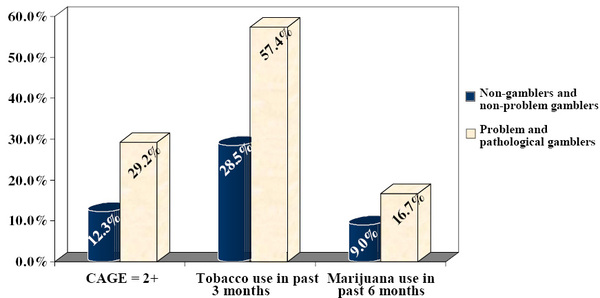Clinical populations have long been a fertile source of subjects for epidemiologists. Persons seeking medical care are a self-selected group that generally has higher morbidity rates than the general population. Thus, canvassing emergency rooms, HMOs, and other clinical settings allows researchers to assemble cohorts in less time and at less expense than would be needed for traditional, household recruiting. One particular clinical population, primary care patients, is a perennial favorite for epidemiologists and clinical investigators. Pasternak and Fleming (1999) sought point prevalences of problem gambling and comorbid pathologies from this population.
Between November, 1997 and April, 1998, the authors studied samples of Wisconsin adults drawn from three different primary care facilities around the state. Of the 1,394 persons invited to complete the 39-item survey instrument, 1,051 consented to participate. The study excluded prisoners, the mentally retarded, non-English speakers, and persons in "immediate medical distress."
In addition to determining the prevalence of problem and pathological gambling using the SOGS (South Oaks Gambling Screen), the authors examined marijuana use, tobacco use, and alcohol abuse. They evaluated alcohol problems using the CAGE, a 4-question traditional screening device. The CAGE questions are presented below, as is comorbidity data. The prevalence of problem gambling among subjects from all three sites was found to be 4.2%. The prevalence of pathological gambling was determined to be 6.2%.
While neither their findings or methodology are groundbreaking, Pasternak and Fleming demonstrate the feasibility of conducting this type of study in a primary care setting. By involving primary care providers, this research has made the study of disordered gambling more central to the concerns of the general healthcare community.

Source: Pasternak IV, A.V. & Fleming, M.F. (1999). Prevalence of gambling disorders in a primary care setting. Archives of Family Medicine, 8, 515-520.
The WAGER is funded, in part, by the National Center for Responsible Gaming, the Massachusetts Department of Public Health, the Andrews Foundation, the Addiction Technology Transfer Center of New England, the Substance Abuse and Mental Health Administration Services, and the Center for Substance Abuse Treatment.




